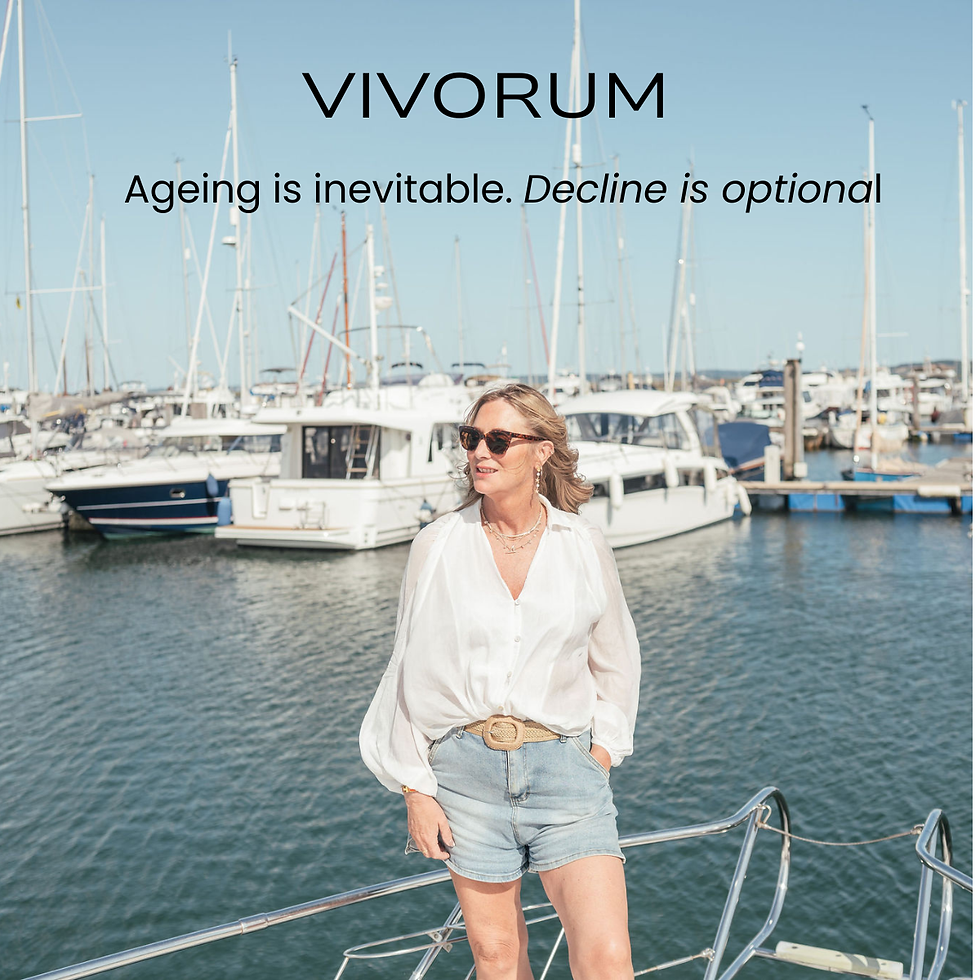The Inflammation Paradox: Why Your Anti-Ageing Strategy Needs Rethinking
- Dr Victoria Manning

- Feb 10
- 4 min read

In the ever-evolving field of aesthetic medicine, understanding the underlying mechanisms of ageing is crucial for developing effective treatments. As an aesthetic doctor and the author of the upcoming book "The Inflammation Game" (Summer 2025), I have been captivated by the emerging evidence linking chronic inflammation to accelerated ageing. This revelation prompts a critical question: why do we continue to use treatments that intentionally trigger inflammatory responses in our quest for youthful skin? In this article, we will explore the paradox of inflammation in anti-ageing strategies and introduce Ellanse, a biostimulator that leverages the M2 regenerative pathway to offer a more balanced and sustainable approach to facial rejuvenation.
Recent research reveals that inflammation isn't just a symptom of ageing - it's a driving force. Reactive Oxygen Species (ROS) damage, chronic low-grade inflammation, and compromised Extracellular Matrix (ECM) integrity all contribute to what we perceive as ageing. This understanding challenges traditional biostimulator approaches that rely heavily on inflammatory responses.
My current goto biostimulator is Ellanse, Polycalprolactone/( PCL) when I'm talking about it, I liken it to a sophisticated Malteser of the aesthetic world. Just as a Malteser has a crispy honeycomb center coated in chocolate, Ellanse consists of PCL microspheres (30%) suspended in a CMC gel carrier (70%). The gel carrier, like the chocolate coating, provides immediate volume and gradually absorbs over 6-8 weeks. Meanwhile, the PCL microspheres, like the honeycomb centre, are the real heroes - sized perfectly at 25-50 µm to avoid being broken down too quickly by your immune system.
These microspheres get to work stimulating collagen production, ensuring that as the initial gel volume fades, new natural collagen takes its place. Over time, the PCL breaks down naturally into simple compounds (CO2 and H2O) that your body easily eliminates, much like how a Malteser dissolves to leave no trace. The length of the PCL-polymer chain determines how long this process takes, allowing for customised treatment durations. This clever design ensures both immediate satisfaction and long-term results - truly having your Malteser and eating it too!
Understanding how aesthetic treatments work beneath your skin is crucial for making informed decisions about your journey. Let's explore how PCL (polycaprolactone/Ellanse) is revolutionising facial rejuvenation through its unique cellular approach.
I like to think of the process as a Three-Phase Journey
1. The Gentle Wake-Up (Days 1-14)
Unlike traditional treatments that shock your system, PCL begins with a controlled response:
- Minimal inflammation
- Lower levels of inflammatory proteins
- Reduced swelling and redness
- Shorter downtime
2. The Transformation (Days 14-28)
This is where science meets artistry:
- Your body transitions from alert to repair mode
- M1 "emergency" cells give way to M2 "builder" cells
- Production of healing cytokines (proteins) (IL-4 and IL-13) increases
- Skin preparation for deep regeneration begins
3. The Regeneration Revolution (Beyond 28 days)
The magic of long-term renewal:
- Continuous collagen production
- Enhanced tissue structure
- Natural volume restoration
- Improved skin quality
Understanding Your Skin's Heroes
M1 Macrophages (The First Responders):
- Act as emergency response teams
- Create necessary initial inflammation
- Signal repair needs through protein messengers (cytokines)
- Minimal activation with PCL compared to traditional treatments
M2 Macrophages (The Master Builders):
- Focus on tissue regeneration
- Release growth factors
- Support collagen production
- Create lasting improvements
The PCL Advantage- Enter the M2 Regenerative Pathway
This is where Polycalprolactone PCL/ (Ellanse) stands out through its preferential activation of the M2 regenerative pathway:
1. Traditional Treatments vs. Polycalprolactone PCL/ (Ellanse)- Traditional:
-Heavy initial inflammation
- Ellanse seemingly exhibits a controlled response favouring regeneration
2. The M2 Advantage:
- Reduced Reactive Oxygen Species damage
- Enhanced extracellular matrix repair
- Lower inflammatory cytokine ( those inflammatory messengers) production
- Better tissue integration
What’s the Clinical Evidence?:
- 76% structural integrity at 6 months
-18-24 month longevity
- Lower complication risks
- Natural-looking results
Why PCL Stands Out:
- Preferential activation of healing M2 cells
- Reduced inflammatory response
- Better tissue integration
- Sustained regeneration
Think of PCL as conducting a skilled orchestra rather than a loud rock concert - it's all about harmony and balance in your skin's regeneration process.
Why This Matters for Anti-Ageing:
- Reduces chronic inflammation burden
- Supports natural healing mechanisms
- Maintains your extracellular matrix (ECM) integrity
- Minimises oxidative stress
This paradigm shift in understanding inflammation's role in ageing suggests we need to rethink our approach to aesthetic treatments. By favouring regenerative over inflammatory pathways, we can achieve better, more sustainable results while supporting our body's natural anti-ageing mechanisms.
The traditional approach to anti-ageing treatments often relies on triggering inflammatory responses to stimulate collagen production and achieve immediate results. However, recent research highlights that chronic inflammation is not just a symptom but a driving force behind accelerated ageing. This article delves into the innovative use of Ellanse, a biostimulator that employs Polycaprolactone (PCL) microspheres to activate the M2 regenerative pathway, minimising inflammation while promoting long-term tissue regeneration and collagen production. By favouring regenerative over inflammatory pathways, Ellanse offers a sophisticated solution that supports the body's natural anti-ageing mechanisms, ensuring both immediate satisfaction and lasting results. As we rethink our approach to aesthetic treatments, it becomes clear that reducing chronic inflammation is key to achieving sustainable and natural-looking anti-ageing outcomes. For more insights on the role of inflammation in ageing, stay tuned for "The Inflammation Game," coming Summer 2025.




Comments